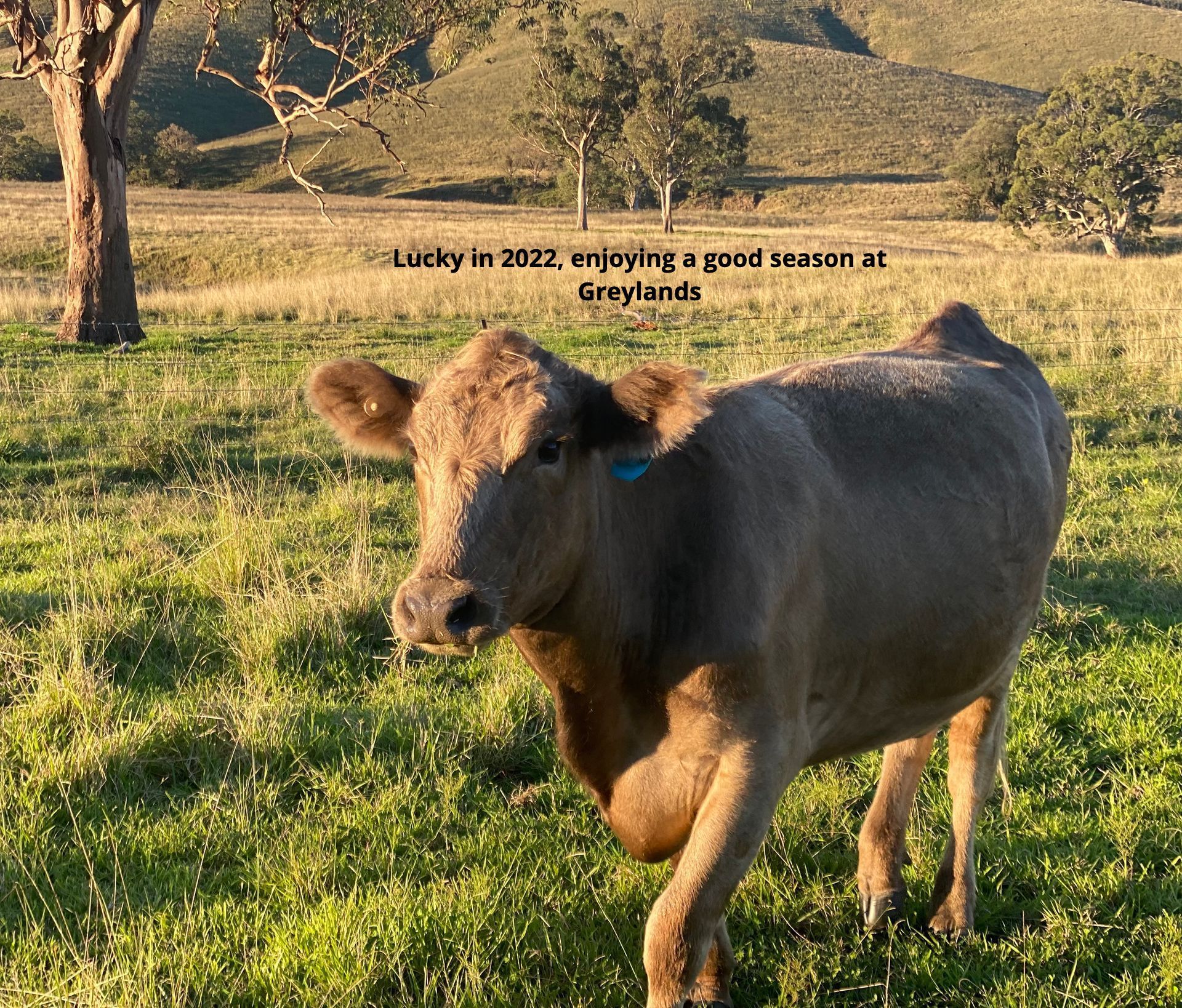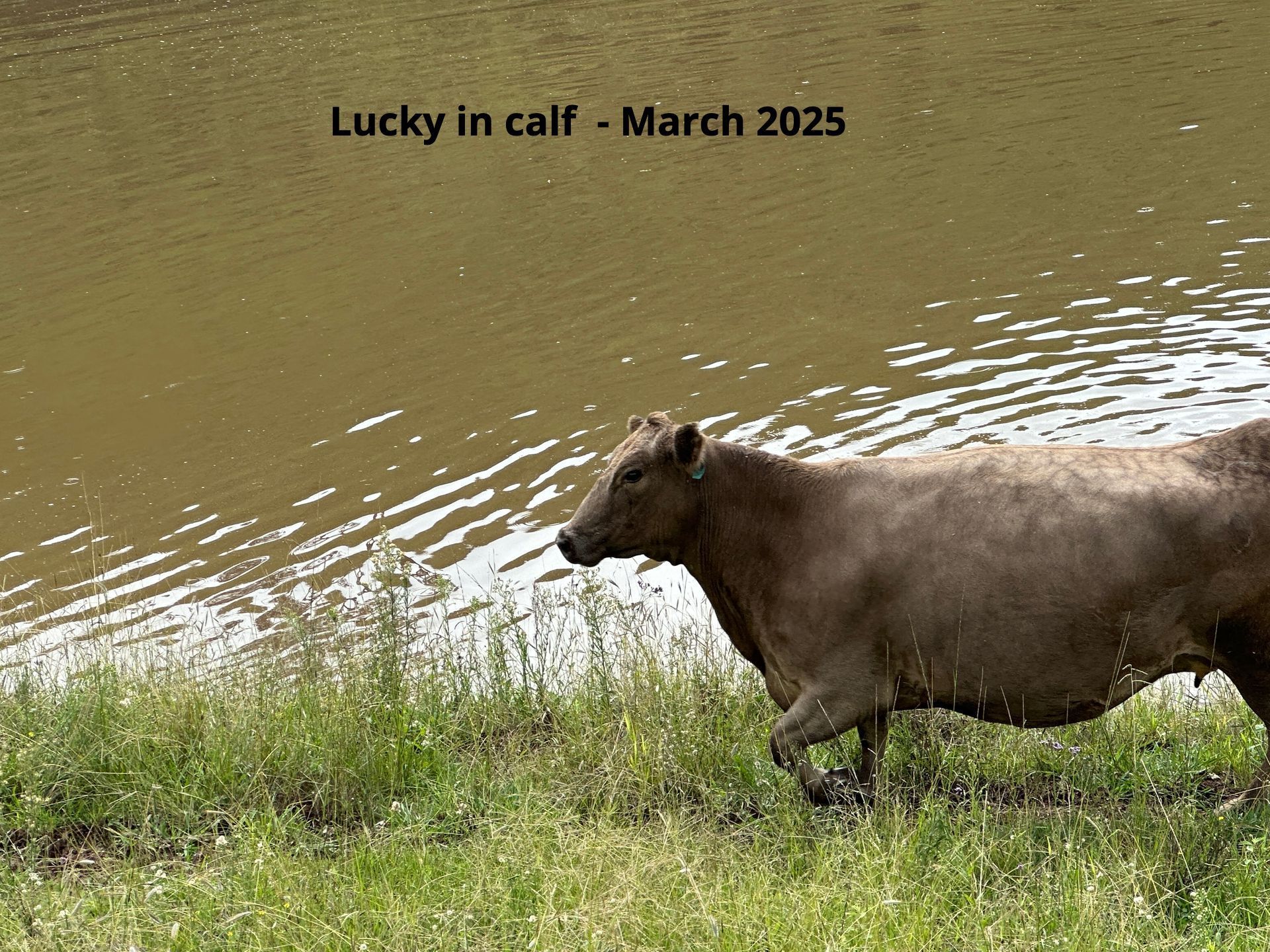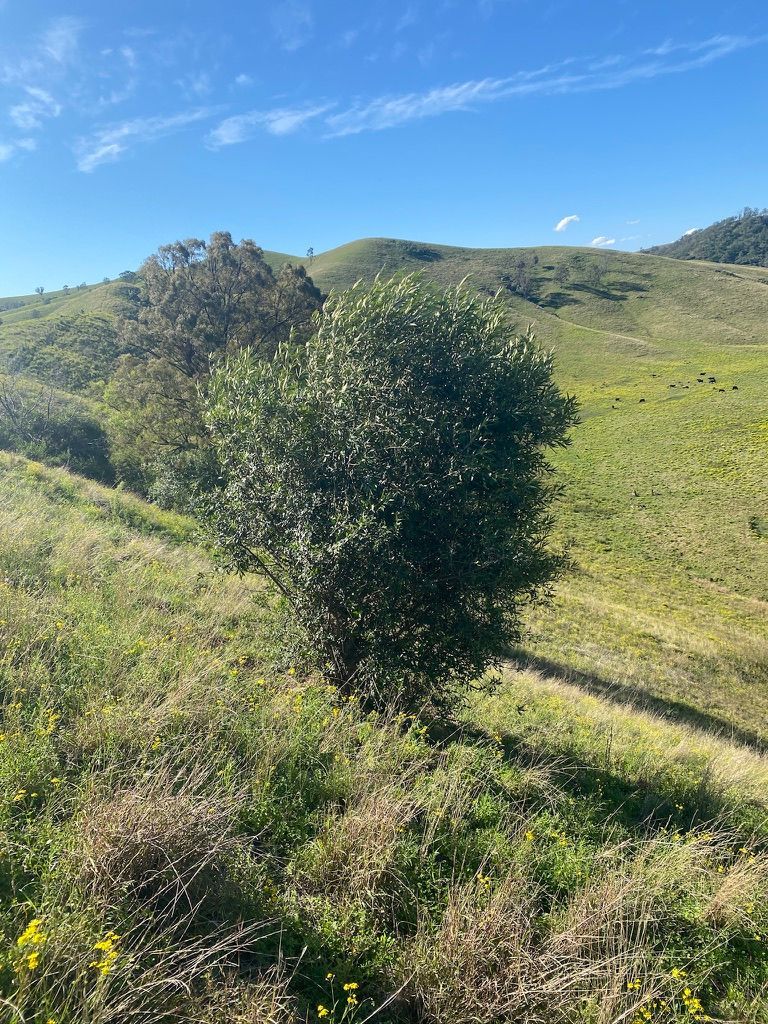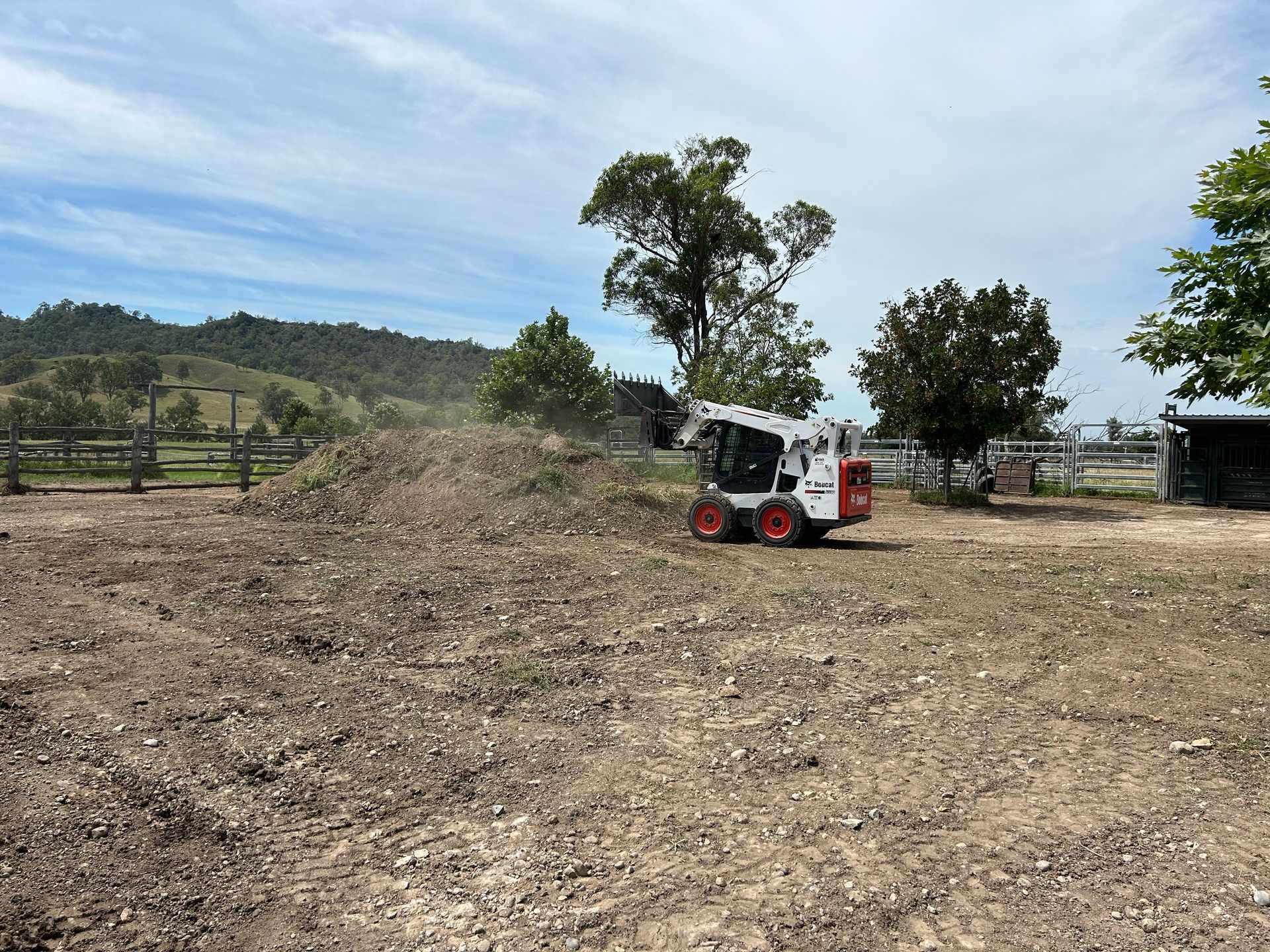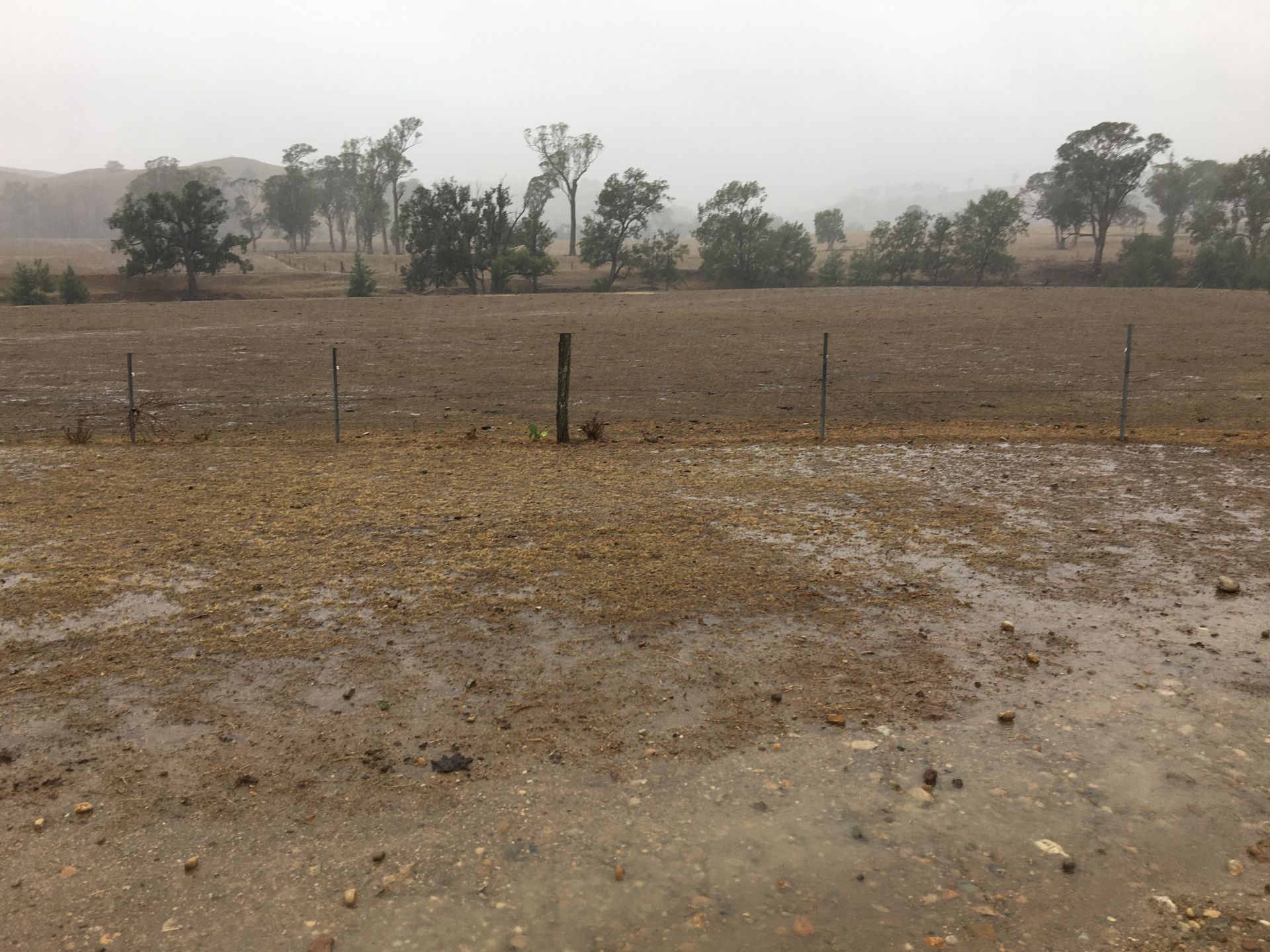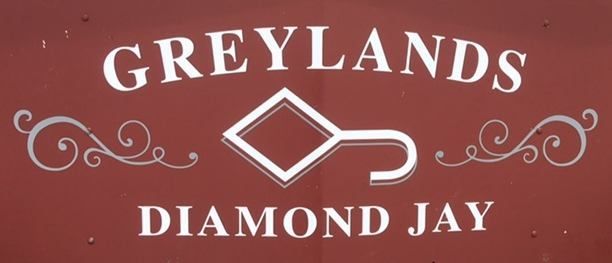'Lucky' the drought survivor.
- By Matt Bailey
- •
- 21 Jan, 2025
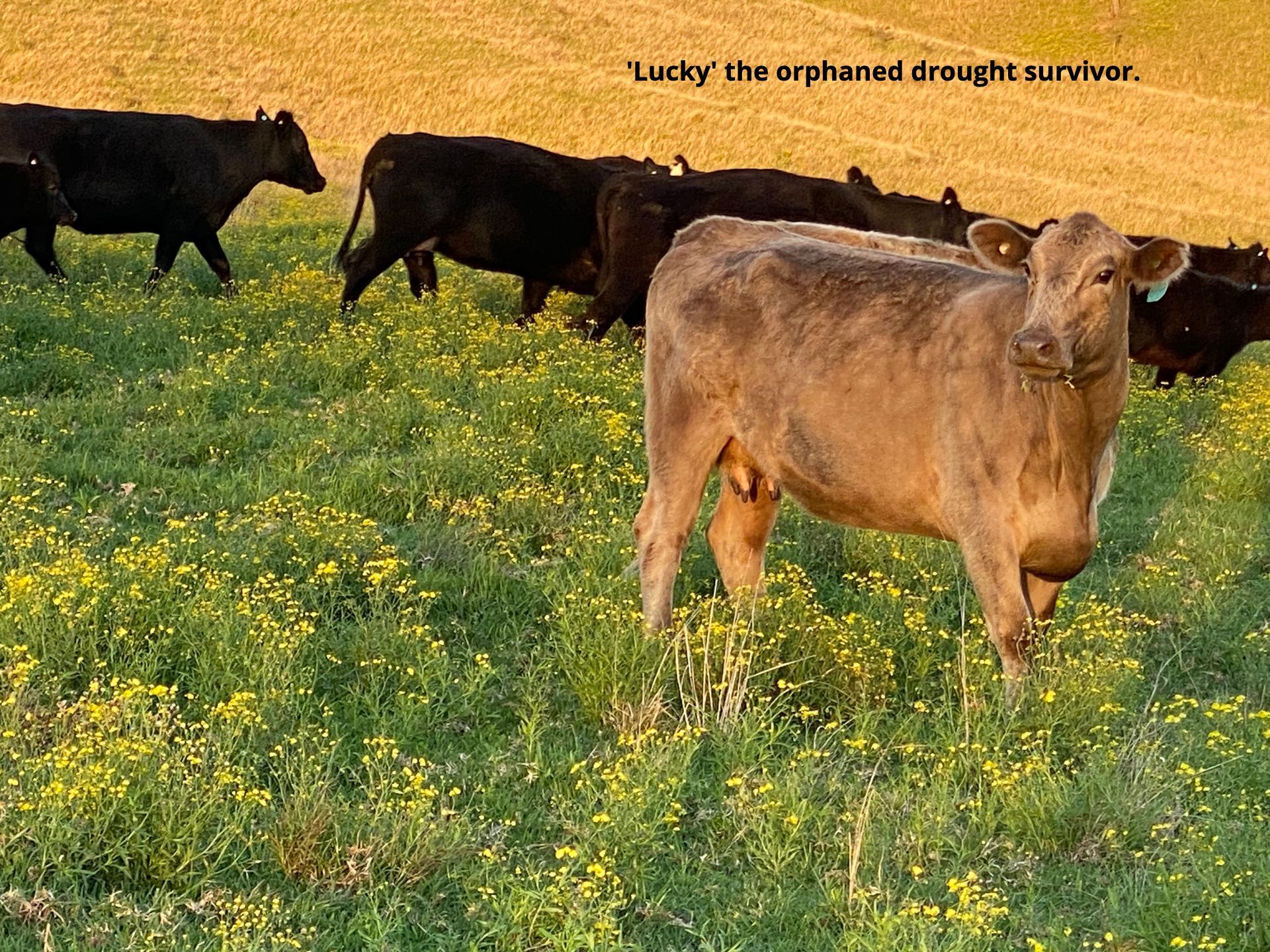
Many will still vividly remember the severe drought of 2019, reaching its peak in early 2020. Alongside the drought, at that time Australia also faced some of its worst bushfires in living memory. The drought finally broke in the first half of 2020.
Greylands has an amazing calf survival story from that time.
The drought in 2019 was more extreme than any other we had seen before. Grass was running out. Water was running out. Even drought-resistant native gum trees were dying. The abattoirs were over-laden, due to so many cattle farmers being left with no other option but to sell their cattle to avoid cattle dying due to the drought. There was very little rain throughout the entirety of 2019, so when the Summer heat hit at the end of 2019, still with no rain, the situation became dire.
This was the state of Goorangoola Creek at that time.
Greylands has an amazing calf survival story from that time.
The drought in 2019 was more extreme than any other we had seen before. Grass was running out. Water was running out. Even drought-resistant native gum trees were dying. The abattoirs were over-laden, due to so many cattle farmers being left with no other option but to sell their cattle to avoid cattle dying due to the drought. There was very little rain throughout the entirety of 2019, so when the Summer heat hit at the end of 2019, still with no rain, the situation became dire.
This was the state of Goorangoola Creek at that time.
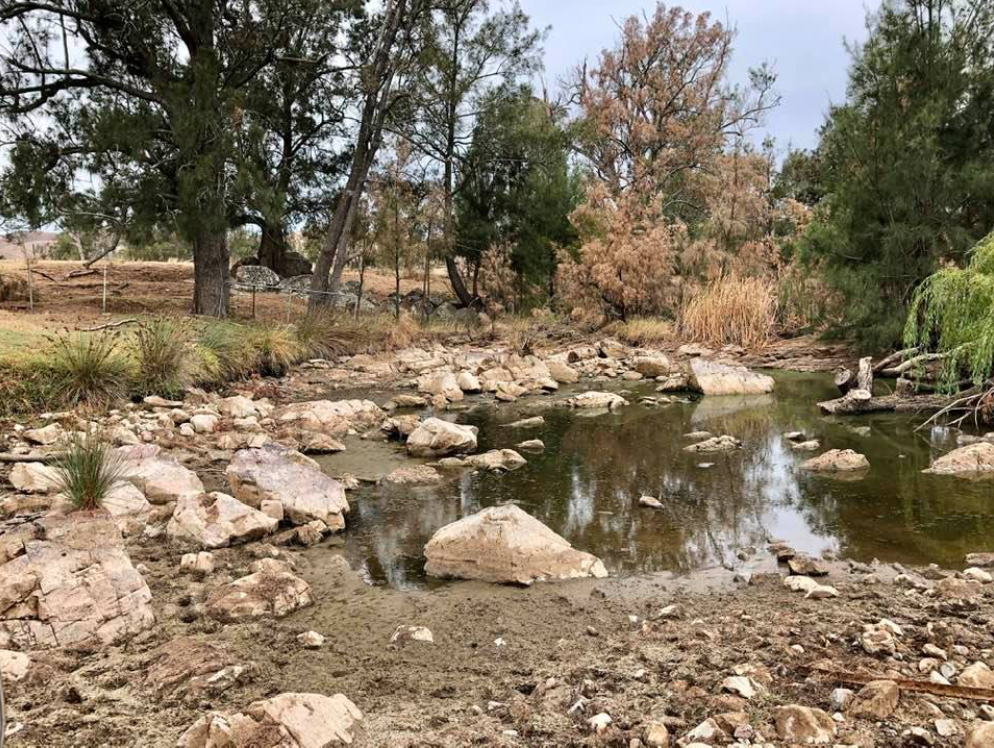
We had 50 cows that had already calved and their calves had been sold some time before. These cows were preg-tested in calf (PTIC). The calves were weaned early and sold to prolong hope for the late in-calf breeding cows, who were due to calve early February 2020. We would never usually sell pregnant breeding cows except in desperate times like this. The cows were losing condition rapidly in the drought, with very little water or grass left and no one knew when the drought would finally break. There was no other option left but to sell them. We got a slot in an abattoir in the NSW town of Young, for early Jan 2020, secured some weeks earlier. Finding abattoirs to buy cattle is often extremely hard in this situation, as they cannot keep up with the long queue of farmers desperately trying to sell cattle before there is no other option but to euthanise the cattle. Many abattoirs closer to Greylands were closed. We were selling trailer loads of cattle in a timeline plan, another batch whenever rain hadn't arrived by a certain date. Severe drought is brutal on so many levels.
Towards the end of 2019/early 2020, there was a big rain band forecast for the following week, but we couldn't back out of the sale. The predicted rain may or may not have come and dire circumstances awaited the cattle if little or no rain were to follow. Sadly, we had to proceed with selling another batch of cows to the abattoir.
A dam had just been dug out with an excavator, as there was nothing but mud left. We often take this opportunity to clean out dams during a drought when they are almost empty, so that the water quality and storage is better, when rain arrives and it once again fills up. Five days after the cows had left on the truck, a heifer calf (Charolais crossed with Murray Grey) was to our great surprise found hidden deep in an excavator caterpillar track next to a dam. The calf's mother had unexpectedly calved prematurely, prior to being sold. None of the cows were expected to calve at this time, so you can imagine the surprise finding a calf, let alone finding a living calf, having survived 5 days on its own in severe drought conditions.
The heifer calf was bottle fed to health by the Wilkinsons. She was given the name 'Lucky', due to her survival in severe drought conditions, on her own for 5 days without a mother. We are very thankful to the Wilkinsons for saving her and nurturing her to become a healthy calf.
Lucky had presumably managed to get a drink with some colostrum from her mother after being born, before her mother was loaded on the truck and that helped her to survive the five days before being found and bottle fed to become a healthy heifer calf.
Another calf ('Steph') had also previously been orphaned and bottle fed, and used to hang around the house as a grown heifer. She adopted Lucky and they were a duo until Steph had her own calf, but they remained friends. They ended up going to different paddocks.
Both Steph and Lucky are now ‘stand out in the paddocks’ breeding cows. They are now the only remaining non-Angus cattle on Greylands. Lucky now has black calves, with Angus bulls.
Both Lucky and Steph will live out all their days on Greylands. They are regularly spotted, happily grazing on the hills of Greylands, distinct from our now otherwise fully black Angus herd.
Towards the end of 2019/early 2020, there was a big rain band forecast for the following week, but we couldn't back out of the sale. The predicted rain may or may not have come and dire circumstances awaited the cattle if little or no rain were to follow. Sadly, we had to proceed with selling another batch of cows to the abattoir.
A dam had just been dug out with an excavator, as there was nothing but mud left. We often take this opportunity to clean out dams during a drought when they are almost empty, so that the water quality and storage is better, when rain arrives and it once again fills up. Five days after the cows had left on the truck, a heifer calf (Charolais crossed with Murray Grey) was to our great surprise found hidden deep in an excavator caterpillar track next to a dam. The calf's mother had unexpectedly calved prematurely, prior to being sold. None of the cows were expected to calve at this time, so you can imagine the surprise finding a calf, let alone finding a living calf, having survived 5 days on its own in severe drought conditions.
The heifer calf was bottle fed to health by the Wilkinsons. She was given the name 'Lucky', due to her survival in severe drought conditions, on her own for 5 days without a mother. We are very thankful to the Wilkinsons for saving her and nurturing her to become a healthy calf.
Lucky had presumably managed to get a drink with some colostrum from her mother after being born, before her mother was loaded on the truck and that helped her to survive the five days before being found and bottle fed to become a healthy heifer calf.
Another calf ('Steph') had also previously been orphaned and bottle fed, and used to hang around the house as a grown heifer. She adopted Lucky and they were a duo until Steph had her own calf, but they remained friends. They ended up going to different paddocks.
Both Steph and Lucky are now ‘stand out in the paddocks’ breeding cows. They are now the only remaining non-Angus cattle on Greylands. Lucky now has black calves, with Angus bulls.
Both Lucky and Steph will live out all their days on Greylands. They are regularly spotted, happily grazing on the hills of Greylands, distinct from our now otherwise fully black Angus herd.
